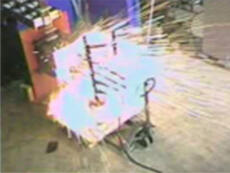
Overview
Based on previous statistics, it's expected that the explosive energy released during arcing faults have sent more than 2,000 workers to burn centers per year. Most of these people were not properly warned of the magnitude of the hazard — if they were warned at all.
Although injuries from an arc blast are not as frequent as other injuries, their severity makes the costs to human life and to industry as a whole much, much greater. The monetary cost alone can easily exceed $1 million, and includes not only medical expenses, but the costs of equipment replacement, downtime and insurance.
Why Arc Flash Is a Vital Issue?
Why Arc Flash Is a Vital Issue
While the potential for arc flash has existed for as long as plants have been powered by electricity, two factors have pushed arc flash prevention to the forefront.
The first is a greater understanding of arc flash hazards and the risks they pose to personnel. Research into arc flash and arc blasts, including testing conducted in Mersen's high-power lab, has begun to quantify the powerful forces they unleash.
The second factor is increased vigilance on the part of OSHA.
OSHA is using the requirements of NFPA 70E, the industry's consensus standard for electrical safety, to judge whether the employer "acted reasonably" in protecting its workers from arc flash hazards. In many cases, this has resulted in employers facing substantial fines after arc flash events.
Employers have always had a moral obligation to their workers to minimize the chance of catastrophic arc flashes. But never before have their financial obligations to their stockholders and their legal obligations to OSHA been as great as they are today.

See what happens during an arc flash in this frame-by-frame analysis of two video examples from our test lab.
Show lessThe Causes of Arc Flash
An arc flash can be caused a number of ways, including:
- Accidental contact with energized parts
- Inadequate short circuit ratings
- Tracking across insulation surfaces
- Equipment failures
- Tools dropped on energized parts
- Wiring errors
- Contamination, such as dust on insulating surfaces
- Corrosion of equipment parts and contacts
- Improper work procedures
As you would expect, proper procedures, tools and maintenance can prevent most arc flash situations from occurring.
Arc Flash Hazards
The Explosive Power of an Arc Flash
The many intense hazards created by arcing faults in today's industrial power systems arise from two factors: the tremendous amounts of power that can be delivered to such arcs and the workers' close proximity to them.
As you can see from Test Sequence 1, a frame-by-frame description of a test performed in Mersen's high-power lab, the development of a high-current arcing fault is like an explosion.
When an arcing fault is being established, current begins passing though ionized air. Large volumes of ionized gases, along with metal from the vaporized conductors, are rapidly expelled. As the arc runs its course, electrical energy continues to be converted into extremely hazardous forms of energy.
All of these events usually occur in less than 0.2 seconds, and can create:
- Intense heat
- Thermoacoustic shock wave
- Molten metal
- Shrapnel
- Blinding light
- Toxic gases
- Contact with energized components
The electrical current flowing through the ionized air creates tremendously high levels of heat energy. This heat is transferred to the plasma, which rapidly expands away from the source of supply.
Tests have shown that heat densities at typical working distances can exceed 40 cal/cm². Even at lower levels, conventional clothing ignites, causing severe, often fatal, burns. At typical arc fault durations of less than one second, a heat density of only 1.2 cal/cm² on exposed flesh is enough to cause a second-degree burn. Even workers not in the plasma can be severely burned from the intense heat radiated beyond typical working distances.
Thermoacoustic Shock Wave
As the conductive element that caused the arc is vaporized, the power delivered to the arc fault rises rapidly. This corresponds to a rapid rise in surrounding pressure. The resultant shock wave can create impulse sound levels well beyond OSHA's allowable limits. Forces from the pressure wave can rupture ear drums, collapse lungs or cause fatal injuries.
Molten Metal
At high fault current levels, plasma jets are formed at the electrodes. Vaporized and molten electrode material is ejected at high velocity from these jets, reaching distances of several feet away. Since the molten metal is typically over 1000° C, it's a potential ignition source for conventional clothing.
Shrapnel
The force of the explosion also causes a significant amount of shrapnel to be accelerated away from the source. These particles can impact a nearby worker at high velocity, resulting in physical trauma.
Blinding Light
As the arc is established, an extremely bright flash of light occurs. The light can cause immediate vision damage and increase the potential for future vision deterioration.
Toxic Gases
As plasma is driven further from the arc, it cools rapidly. Plasma components can combine to form toxic byproducts such as copper oxides.
Contact with Energized Components
The explosive nature of an arc fault increases the possibility that an energized conductor or components will make contact with workers in the area.
OSHA Regulations
Regulations for Protecting Workers From Arc Flash Hazards: Employer Responsibilities Under OSHA

OSHA regulations were developed to mandate that employers provide a safe workplace for their employees. The following sections of standard CFR Part 1910 promote the safety of employees working on or near electrical equipment, and clearly define employers' responsibilities:
Equipment must be deenergized before work is performed!
In addressing work on electrical equipment, 1910.333(a)(1) states:
Live parts to which an employee may be exposed shall be deenergized before the employee works on or near them, unless the employer can demonstrate that deenergizing introduces additional or increased hazards or is infeasible due to equipment design or operational limitations.
Lockout/tagout procedures must be used
In Note 2 of 1910.333(b)(2), it states:
Lockout and tagging procedures that comply with paragraphs (c) through (f) of 29 CFR Part 1910.147 will also be deemed to comply with paragraph (b)(2) of this section, provided that:
[1] The procedures address the electrical safety hazards covered by
this Subpart; and
[2] The procedures also incorporate the requirements of paragraphs
(b)(2)(iii)(D) and (b)(2)(iv)(B) of this section
If equipment cannot be deenergized prior to work:
Employees must be properly protected
When employees are required to work where there is a potential electrical hazard, 29 CFR Part 1910.335 calls for the employer to provide:
...electrical protective equipment that is appropriate for the specific parts of the body to be protected and for the work to be performed.
The appendix to Part 1910 Subpart S references NFPA 70E as providing information that "can be helpful in understanding and complying with the requirements contained in Subpart S."
Employers are responsible for performing a hazard assessment
29 CFR Part 1910.132(d)(1), hazard assessment and equipment selection, states:
The employer shall assess the workplace to determine if hazards are present, or are likely to be present, which necessitate the use of personal protective equipment (PPE). If such hazards are present, or likely to be present, the employer shall:
- Select, and have each affected employee use, the types of PPE that will protect the affected employee from the hazards identified in the hazard assessment (1910.132(d)(1)(i));
- Communicate selection decisions to each affected employee (1910.132(d)(1)(ii)); and,
- Select PPE that properly fits each affected employee (1910.132(d)(1)(iii)).
This is the section referred to in the OSHA standard interpretation that discusses NFPA 70E. The remainder of 1910.132 outlines the requirements for the design, application, proper selection, training and documentation required for the use of personal protective equipment.
Other OSHA Regulations Relating to Arc Flash Hazards
OSHA 29 CFR Part 1910 contains many other sections that pertain to electrical safety and arc flash hazards:
- Subpart S: Paragraphs 1910.301 to 1910.399 address electrical safety requirements, particularly sections 1910.331 through 1910.335, which concern electrical safety work practices
- Subpart I: Paragraphs 1910.132 to 1910.139 cover personal protective equipment
- Subpart J: Paragraphs 1910.141 through 1910.147 discuss general environmental controls, including lockout/tagout
In addition, 29 CFR Part 1926, Safety and Health Regulations for Construction, Subpart K, contains requirements for electrical safety in paragraphs 1926.400 through 1926.449.
Show lessNFPA Regulations
NFPA 70, National Electrical Code®
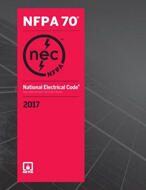
While the National Electrical Code (NEC) has traditionally addressed proper installation techniques intended to prevent fire, electrocution and shock hazard, it now contains requirements related to arc flash hazards.
Section 110-16, Flash Protection (new in the 2002 edition of the NEC), requires markings on switchboards, panelboards, industrial control panels and motor control centers to warn qualified persons of potential arc flash hazards.
NFPA 70E Standard
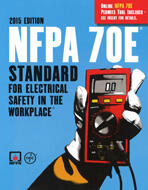
Ever since its first edition in 1979, NFPA 70E, Standard for Electrical Safety in the Workplace, developed by the National Fire Protection Association, has been considered a national consensus standard for electrical safety. It covers the full range of electrical safety issues, from work practices to maintenance, special equipment requirements and installation.
The first several editions of the standard, originally titled "Standard for Electrical Safety Requirements for Employee Workplaces," primarily focused on the prevention of electrocution. In the 1995 edition, arc flash hazards started to be addressed with addition of "arc flash hazard boundaries." Through extensive work, more details on protecting workers against arc flash hazards have been included in the next four editions.
The current edition of NFPA 70E is organized into four chapters and a series of annexes designed to provide guidance on how to implement various aspects of an electrical safety program:
- Chapter 1: Safety Related Work Practices
- Chapter 2: Safety Related Maintenance Requirements
- Chapter 3: Safety Requirements for Special Equipment
- Annexes A-P
The Safety Related Work Practices chapter of NFPA 70E provides guidelines for:
- Developing safety-related work practices, including:
- A safety program with defined responsibilities
- Training for workers
- Establishing electrically safe work conditions
- Working involving electrical hazards, including:
- Performing electrical hazard and flash hazard analyses
- Selecting personal protective equipment (PPE) for workers
Chapter 1 outlines the requirements of employers whose employees are to work on equipment that has not been placed into an "electrically safe work condition." One of these requirements is to perform an arc flash hazard analysis, which enables the employer to determine the flash-protection boundary and the type of PPE needed.
NFPA 70E and OSHA
OSHA standards don't provide details on how to conduct an electrical hazard assessment or how to select PPE. For guidance on compliance, you need to look to national consensus standards.
NFPA 70E is one of the foremost consensus standards for electrical safety. It covers employee protection from the electrical hazards of shock, arc flash, and arc blasts.
Although it is only referenced in OSHA 29 CFR Part 1910 Subpart S, Appendix A, NFPA 70E is considered by OSHA to be the recognized industry practice for electrical safety.
In its standard interpretation of the relevance of NFPA 70E, OSHA states:
… industry consensus standards, such as NFPA 70E, can be used by OSHA and employers as guides in making hazard analyses and selecting control measures.
And while the current edition of NFPA 70E emphasizes that energized electrical conductors and circuit parts be placed in an electrically safe work condition, it contains extensive requirements for workers who “are exposed to electrical hazards from electrical conductors or circuit parts that are or can become energized." When such work is to be performed, the required electrical hazard analysis has specific requirements for analysis of shock and flash hazards. Other sections provide guidance on selecting the proper PPE.
Show lessOther Regulations
Other Regulations for Protecting Workers From Arc Flash Hazards
Personnel responsible for electrical safety should stay up to date on all relevant consensus standards. Here are other industry standards that address electrical safety as it applies to arc flash hazards:
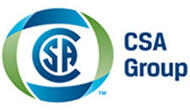
As a result of recent developments involving issues with arc flash in Canada, CSA has formed a committee to create a Canadian standard — designated CSA-Z462, Standard on Workplace Electrical Safety — to be effective in 2008.
Based on an agreement with the NFPA, the CSA will be using NFPA 70E as the "seed document" for the development of CSA-Z462. The intent is to harmonize both documents as much as practicable for Canadian workplaces.
In response to requests from Canadian industry for a simple summary of the direction and purpose of CSA-Z462, the CSA has created a fact sheet. For additional information, go to the CSA website.
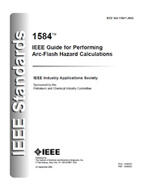
As implied by its title, Guide for Performing Arc Flash Hazard Calculations, IEEE Standard 1584 provides techniques for designers and facility operators to apply in determining the arc flash-protection boundary and arc flash incident energy for PPE selection.
Show less